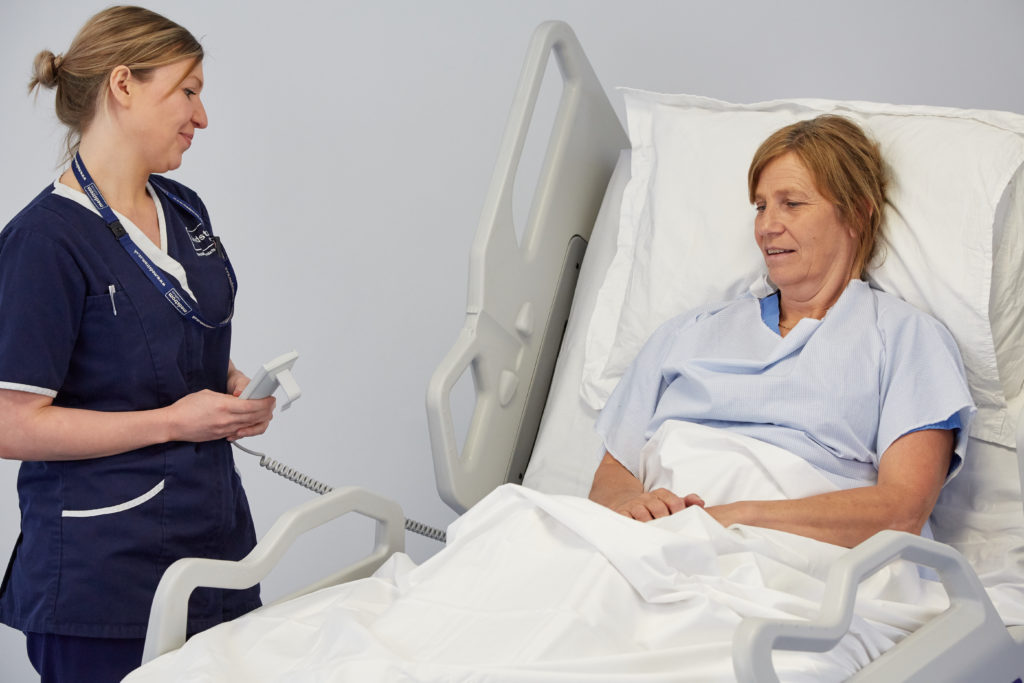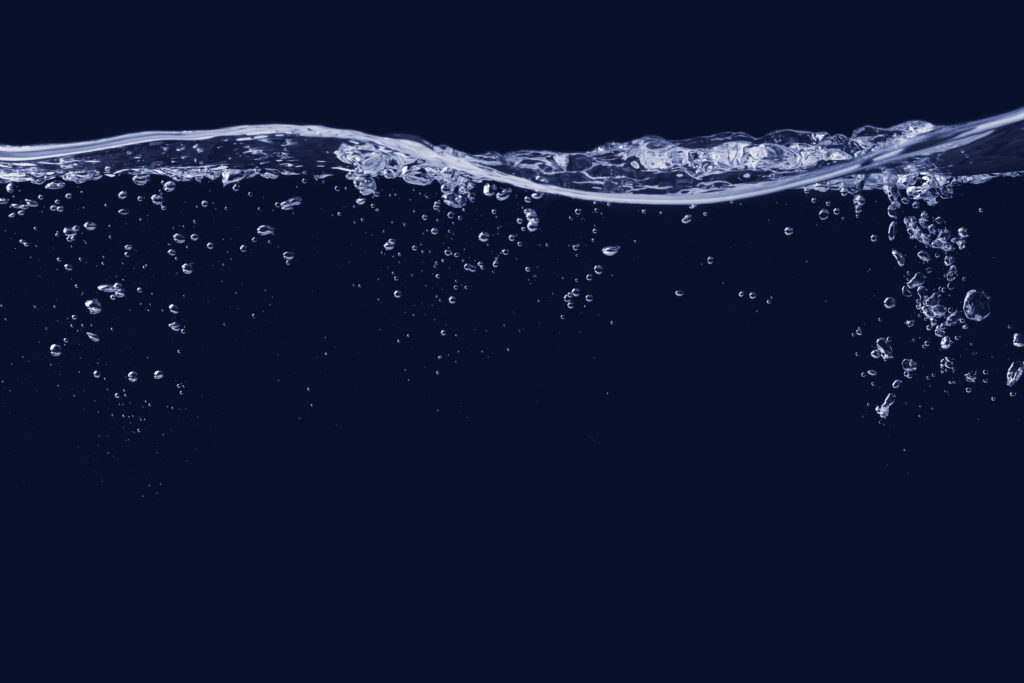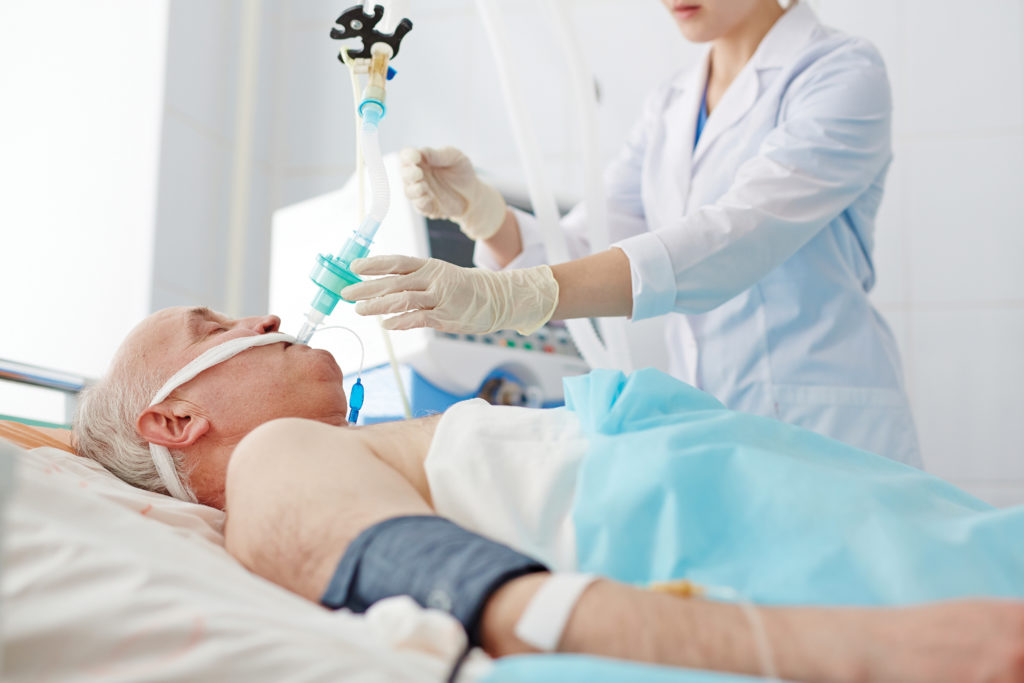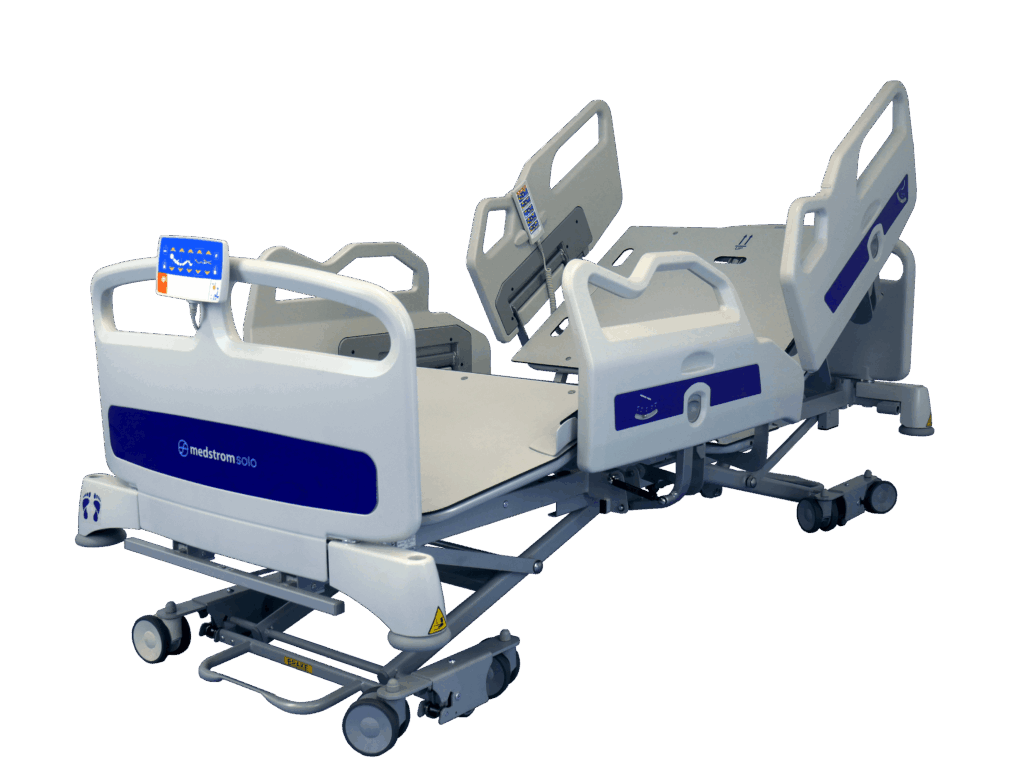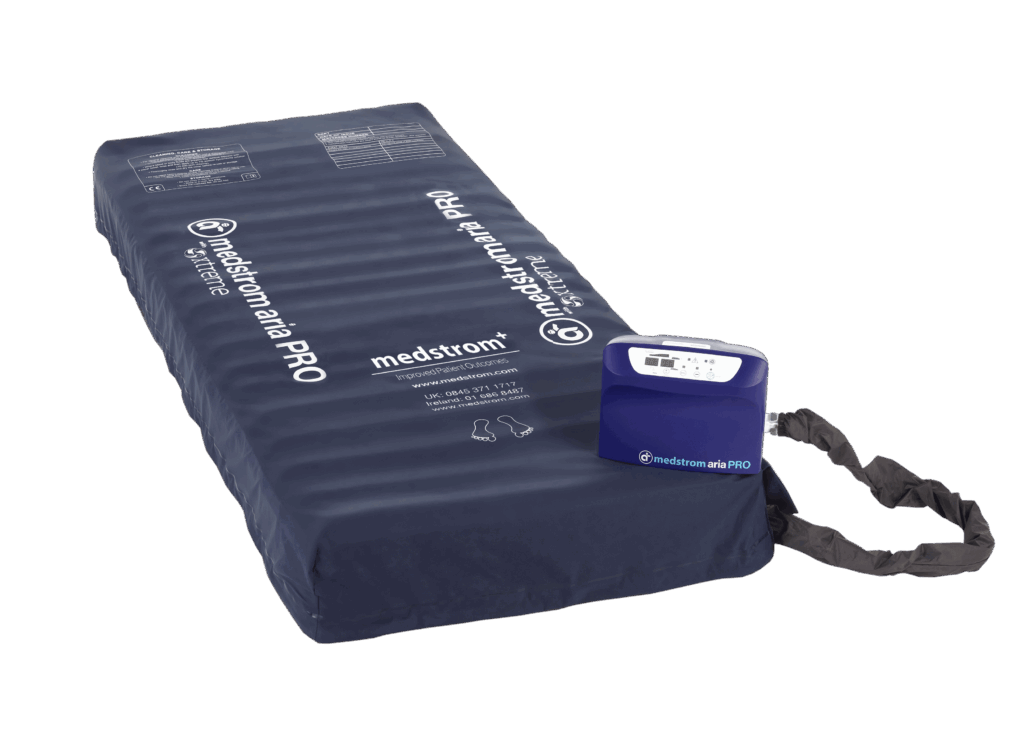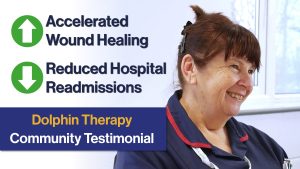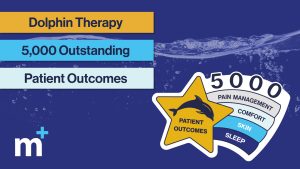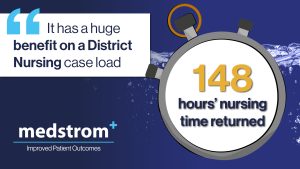
How Dolphin Therapy Helped Prevent a Hospital Admission
This post describes how using Dolphin Therapy helped prevent a hospital admission. It also tells the story of how an elderly couple were reunited after a forced separation due to illness.
The full case study can be found here. However, this post covers the main points and includes a voice message from the couple’s daughter:
Audio Player
Introduction
Margaret* (age 93) had been living in a care home for the last five years, due to a decrease in mobility. Her husband Jim* was also a resident in the same home, and they had a daily, well-established routine of spending quality time together in the day room. She could stand, transfer and walk short distances.
*Names have been changed.
Clinical Challenges
Margaret unfortunately developed an infection, and as a result became bed bound and fully dependent for all care. She lost her appetite, and her fluid and food intakes both reduced.
This combination of challenges reduced Margaret’s skin perfusion. As a result, after becoming bed bound, she developed two Category 3 pressure ulcers on her sacrum and back.
Her skin was at very high risk of further deterioration. Margaret and her family were worried she may need to be admitted to hospital if she didn’t improve.
The traditional alternating mattress that Margaret had been prescribed was uncomfortable. Inflation of the cells during the alternating cycle was causing pain, and this was affecting her sleep. Because of this, staff were concerned her recovery could be affected.
Because she was now bed bound, Margaret’s normal routine was completely gone. It meant she couldn’t go to the day room to spend time with Jim, which was really upsetting both of them. Her daughter was worried about the negative psychological effect the separation was having on her mum and dad.
Clinical and Other Objectives
- Treat existing skin damage
- Prevent further skin breakdown
- Improve pain management
- Improve comfort and sleep
- Reunite Margaret and Jim
Introduction of the Dolphin Therapy Fluid Immersion Simulation Support Surface
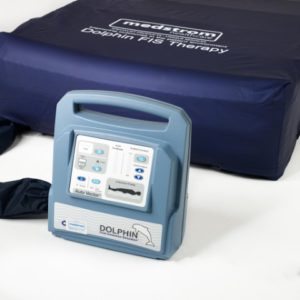
Dolphin Therapy is a unique reactive support surface that simulates a fluid environment. Research has demonstrated that it maintains tissue symmetry,1 minimises vascular occlusion,2 and prevents tissue ischaemia even when the patient is nursed directly on a wound.3
Data collected from 5,000 patients nursed on has demonstrated that it is extremely effective at treatment of skin damage, with 62% of wounds healed or improved at the end of placement. It also improved comfort, pain management and sleep in over 99% of users who had these as an objective.4
Medstrom’s Clinical Advisor visited the care home to assess product suitability. She could see that the mattress she was currently using was not meeting Margaret’s clinical or psychological needs.
Because Margaret had existing pressure ulcers and was at very high risk of developing more, Medstrom’s Clinical Advisor and Margaret’s family and carers felt that Dolphin Therapy would be the best surface for her.
The Dolphin Therapy surface proved hugely beneficial for Margaret; she was instantly more comfortable, with pain significantly reduced. She immediately slept better, and started to eat and drink more, as she wasn’t constantly uncomfortable.
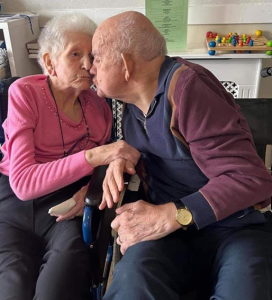
Both Category 3 pressure ulcers healed completely within two weeks, and she did not develop any further skin damage. This was an outstanding outcome, given that Category 3 pressure ulcers are reported to take an average of more than one to four months to heal.5
Once Margaret’s pressure ulcers had healed, she was well enough to get out of bed again, and be reunited with her husband. They got their routine and their life together back.
Summary
All of Margaret’s objectives were met in a very short time period; her pressure ulcers healed, no further skin damage occurred, her pain reduced significantly, and comfort and sleep improved.
This case study demonstrates how the right product, at the right time, can be absolutely transformative for a person’s clinical outcomes and their life. The use of Dolphin Therapy helped prevent a hospital admission, allowing Margaret to recover in her home, as she had wished. Also, every hospital admission prevented helps the NHS as it faces year-round escalation pressures.
